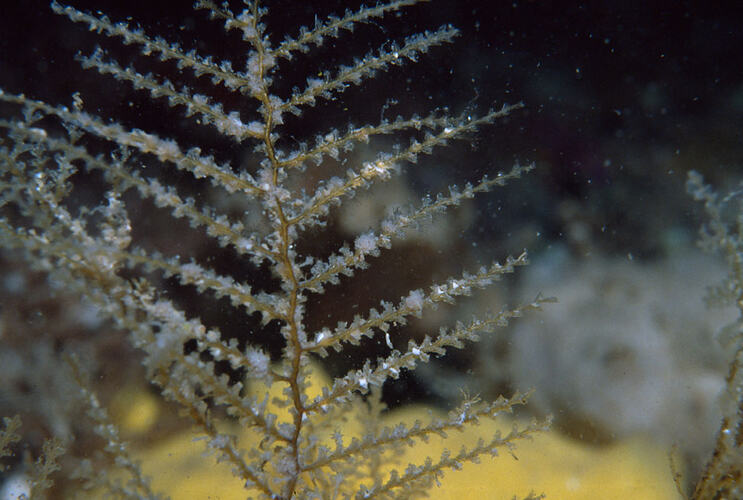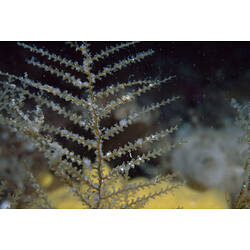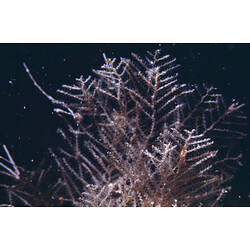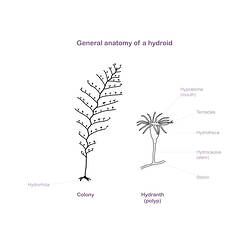General Description
Colony of individual polyps (hydranths) joined by root-like network of tubular stolons at the base. Colony shape is feather-like (pinnate). Colour: buff to dark greyish-brown, sometimes covered by pink coralline alga. Up to 5 cm high.
Biology
These hydroids are widespread in southern Australian seas although some are small and cryptic and therefore not easily seen. Their colonies grow throughout the year, and are fertile in winter.
Distribution
Southern Australia (South Australia, Victoria, Western Australia).
Habitat
Subtidal, epizoic on bryozoans in tidal channels and areas of strong current flow on reefs.
More Information
-
Animal Type
-
Animal SubType
-
Brief Id
Grey-brown tufted intergrown stems, sometimes overgrown by pink coralline alga, three marginal cusps of the hydrotheca.
-
Maximum Size
5 cm
-
Habitats
-
Diet
Plankton or Particles
-
Diet Categories
Plankton
-
Hazards
Generally not harmful but still able to sting bare skin.
-
Endemicity
-
Commercial
No
-
Conservation Statuses
DSE Advisory List: Not listed, EPBC Act 1999: Not listed, IUCN Red List: Not listed
-
Depths
Shallow (1-30 m)
-
Water Column Locations
On or near seafloor
-
Taxon Name
-
Scientific Author
(Kirchenpauer, 1884)
-
Common Name
Hydroid
-
Phylum
-
Class
-
Subclass
-
Order
-
Family
-
Genus
-
Species Name
subdichotomus




